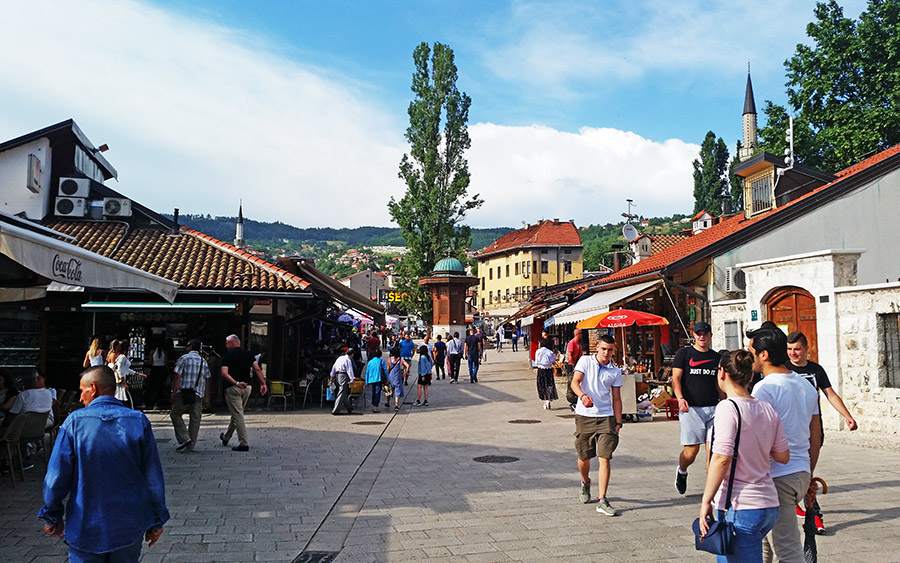Baščaršija is actually a very wide street which serves as a square in the heart of Sarajevo’s main bazaar (čaršija).
It encompasses an entire area, stretching from Čekrekčina Mosque and Baščaršija Mosque, to the remains of Firuz Bey’s Hamam (ćulhan). It is often used as a synonym for the entire čaršija and was one of the earliest symbols of Sarajevo. What had once served as a medieval marketplace during the Ottoman period, later grew to become the most important part of the city. The word Baščaršija comes from the Turkish words for “main market” (baş = head, main; çarşı = bazaar, market). When Austro-Hungarian rule was imposed, and after several devastating fires, the entire bazaar, especially the main square, underwent major changes. Čaršija was reduced in size and the many massive buildings that were erected on all sides had styles which contrasted sharply with the existing structures. The unavoidable changes brought about by these developments greatly altered the appearance of this part of Sarajevo. In 1754 the Bosnian Governor, Mehmed Pasha Kukavica, commissioned the construction of Sebilj (fountain kiosk) in Baščaršija. This would later be replaced by a newer Sebilj in 1891, as designed by the architect, Aleksandar Vitek, who based his design on the stone kiosk that is situated next to Mimar Sinan’s Turbe (mausoleum) in Istanbul.






